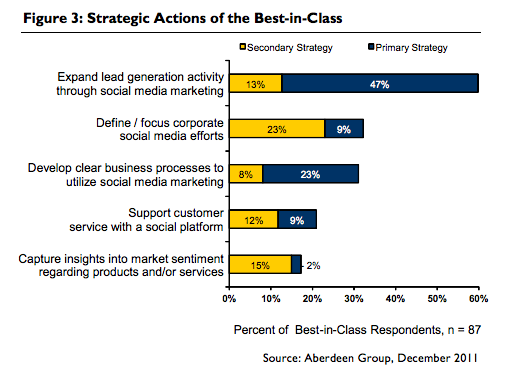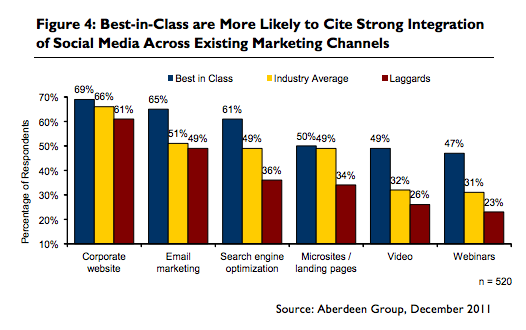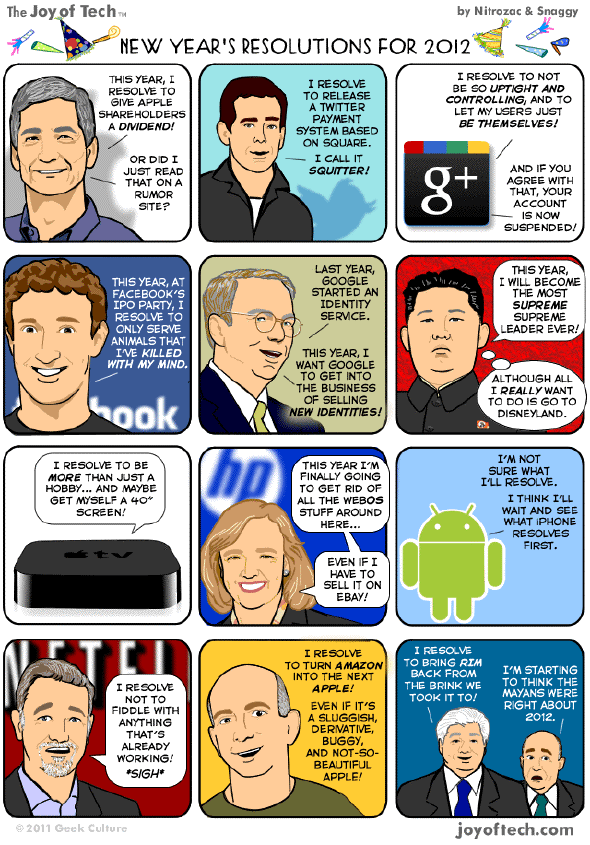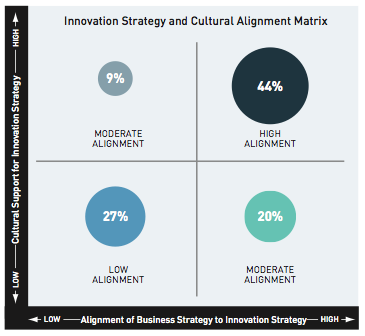Survey: How Top B2B companies generate more leads via Social Media
The challenge for all B2B companies is to find the balance between inbound and outbound marketing today. And the main question is how to generate leads with Social Media. A new study conducted by Aberdeen Group sponsored by Silverpop and Eloqua, offers some insights in how Best-in-Class B2B companies generate leads through Social Media platforms.
The findings of the study “B2B Social Meeting Marketing: Are We There Yet” show that on average 17% of the Best-in-Class B2B companies generate their leads via Social Media channels. Compared to their peers, this is almost 230% more marketing-generated leads through Social Media than other companies (5%). 84% of the responding B2B companies were using social marketing in some form.
The study differentiates between Best-in-Class (top 20% of aggregate performers) versus the industry average (middle 50%) and laggard (bottom 30%) organizations by using the following metrics…
1. The average annual company revenue growth of 20%, compared with 8% for Industry Average and -3% for Laggard firms.
2. An increase of 10% year-over-year improvement of marketing leads in average resulting in closed business – versus 3% for the Industry Average and -1% for Laggard firms.
3. A lead pipeline of 44% in sales-forecast generated by marketing – versus 10% for Industry Average and 5% for Laggard firms.
4. A 73% annual customer retention rate – versus 27% for Industry Average and 7% for Laggard firms.

The Best-in-Class companies show an outstanding adoption of various social technologies…
– 51% use website social sharing tools, versus 36% of Industry-Average firms.
– 49% use keyword-based Social Media monitoring, versus 39% of Industry-Average firms.
– 21% use social sign-in, versus 8% of Industry-Average firms.

Best-in-Class companies have experienced the opportunity of utilizing Social Media for the sales funnel, and know how to generate leads through social engagement.
– 80% of Best-in-Class companies are more actively engaged in Social Media marketing – versus 73% of Industry-Average firms and 60% of Laggards
– 47% of Best-in-Class companies see expanding lead generation as their primary strategy with Social Media marketing, and 13% cite generating leads as their secondary strategy.
– 23% of Best-in-Class companies said developing clear business processes for social marketing as their top strategy, and 8% cite process development as a secondary strategy.
Spot On!
All-in-all, the study shows the challenge of creating the right Social Media strategy for business when you want to succeed with lead generation via Social Media. But it is not only strong engagement the company needs. It is also the clever combination of using Social Media alongside the right communication techniques like email and SEO, and how Best-in-Class companies succeed here. They are 27% times more likely to integrate email with Social Media than Industry-Average firms, and 33% more likely than Laggards to do so. And they are also 24% times more likely than Industry-Average firms to integrate SEO with social media (even 69% more likely than Laggards).

What is your experience in lead generation through Social Media? How did your company perform, and what else could you add? Looking forward to learning from you…

 We all want to know how the future looks like? What are key trends? What is the next bid thing in technology or our industry? The challenge is… How can the future be foreseen? Well, maybe there is a way if collaboration succeeds as the new imperative of humanity…
We all want to know how the future looks like? What are key trends? What is the next bid thing in technology or our industry? The challenge is… How can the future be foreseen? Well, maybe there is a way if collaboration succeeds as the new imperative of humanity…
 In a recent study the research companies
In a recent study the research companies 




 Moreover, about the same proportion say their innovation strategy is inadequately aligned with their overall corporate strategy. And although entire industries, such as pharmaceuticals, continue to devote relatively large shares of their resources to innovation, the results are much less successful than they and their stakeholders might hope for.
Moreover, about the same proportion say their innovation strategy is inadequately aligned with their overall corporate strategy. And although entire industries, such as pharmaceuticals, continue to devote relatively large shares of their resources to innovation, the results are much less successful than they and their stakeholders might hope for.